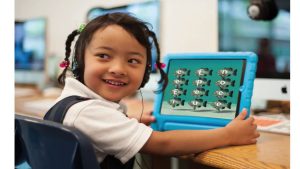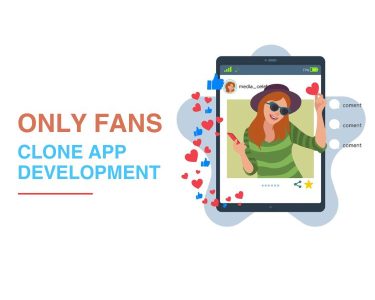The Impact of Early Educational Technologies

Early Technology on Education played a pivotal role in shaping the evolution of technology in education. The introduction of basic tools such as the abacus, blackboards, and overhead projectors marked the beginning of a transformative journey in the educational landscape. These initial tools not only facilitated the teaching and learning process but also laid the groundwork for the sophisticated technological advancements we witness in today’s classrooms. The early adoption of these technologies demonstrated the potential of integrating tools to enhance educational outcomes, thereby setting the stage for future innovations.
The initial tools paved the way for current technology in education by establishing a foundation that highlighted the importance of technological integration in learning environments. For instance, the use of blackboards evolved into interactive whiteboards, and overhead projectors have been replaced by digital projectors and smart screens. These advancements have significantly improved the delivery and reception of educational content, making learning more engaging and effective. The progression from these early technologies to modern-day tools underscores the continuous evolution and the ever-increasing role of technology in education.
The Rise of the Internet in Classrooms
The impact of technology on education in modern classrooms has been profound, especially with the rise of the internet. The internet has revolutionized the way information is accessed, shared, and utilized in educational settings. It has enabled students and educators to connect with a vast array of resources, facilitating a more comprehensive and diverse learning experience. Online libraries, educational websites, and digital textbooks are just a few examples of how the internet has expanded the horizons of education, making information more accessible than ever before.
The integration of technology in education has significantly enhanced learning experiences by providing interactive and engaging platforms for students. Digital tools such as online quizzes, educational games, and virtual classrooms have transformed traditional teaching methods, making learning more dynamic and interactive. These technological advancements have not only improved student engagement but also allowed for more personalized learning experiences, catering to the individual needs and learning styles of each student.
Interactive Learning Platforms

Technology in education has greatly enhanced interactive learning experiences, making education more engaging and effective. Interactive learning platforms, such as educational software and online learning management systems, have revolutionized the way students learn and interact with educational content. These platforms provide a more immersive and hands-on learning experience, allowing students to actively participate in their education rather than passively receiving information.
Interactive platforms have revolutionized technology in education by fostering collaboration and communication among students and educators. Tools such as discussion forums, video conferencing, and collaborative projects enable students to work together and learn from one another, regardless of geographical barriers. This collaborative approach not only enhances the learning experience but also prepares students for the increasingly interconnected and digital world.
The Role of Artificial Intelligence in Education
AI personalizes learning through adaptive technology in education by analyzing individual student data and tailoring educational content to meet their specific needs. Adaptive learning platforms use AI algorithms to assess a student’s strengths and weaknesses, providing customized learning paths that optimize their educational journey. This personalized approach ensures that students receive the support and resources they need to succeed, ultimately improving educational outcomes.
AI-driven analytics enhance technology in education outcomes by providing educators with valuable insights into student performance and progress. These analytics allow educators to identify trends, monitor student engagement, and address potential issues before they become significant problems. By leveraging AI-driven data, educators can make informed decisions that enhance the overall learning experience and ensure that students are on the right track to achieving their academic goals.
Virtual and Augmented Reality in Learning
Virtual Reality (VR) enhances immersive learning experiences by creating realistic and interactive environments that allow students to explore and engage with educational content in new and exciting ways. VR technology can transport students to different times and places, providing a more immersive and engaging learning experience. For example, students can take virtual field trips to historical sites, explore the inner workings of the human body, or conduct virtual science experiments, all from the comfort of their classroom.
Augmented Reality (AR) integrates digital information with the physical world, enhancing the learning experience by overlaying digital content onto real-world environments. AR technology can bring textbooks to life, allowing students to interact with 3D models and animations that provide a deeper understanding of complex concepts. This integration of digital and physical information not only makes learning more engaging but also helps students retain information more effectively.
Mobile Learning and Apps

Mobile learning revolutionizes technology in education by enhancing accessibility and providing students with the ability to learn anytime, anywhere. With the proliferation of smartphones and tablets, students can access educational content on the go, making learning more flexible and convenient. Mobile learning apps offer a wide range of educational resources, from interactive lessons and quizzes to educational games and study aids, all designed to support and enhance the learning experience.
Educational apps exemplify the impact of technology on education by providing innovative and engaging tools that support student learning. These apps are designed to cater to different learning styles and preferences, offering personalized and interactive content that makes learning more enjoyable and effective. From language learning apps to math practice tools, educational apps have become an integral part of modern education, providing students with the resources they need to succeed.
Cloud Computing in Education
Cloud computing enhances technology in education infrastructure by providing scalable and flexible solutions that support the storage, management, and sharing of educational content. Cloud-based platforms allow educators to store and access resources from anywhere, at any time, making it easier to collaborate and share information. This flexibility ensures that educational institutions can efficiently manage their resources and provide students with the tools they need to succeed.
Technology in education evolves with cloud-based learning solutions, offering new and innovative ways to deliver educational content. Cloud-based learning management systems, for example, provide a centralized platform for educators to create, manage, and deliver courses, track student progress, and communicate with students. These systems streamline the educational process, making it more efficient and effective, and ensuring that students have access to the resources they need to achieve their academic goals.
Future Trends in Educational Technology
The impact of AI in technology on education is expected to continue growing, with advancements in AI-driven tools and platforms providing even more personalized and adaptive learning experiences. AI will play a crucial role in identifying and addressing individual student needs, providing real-time feedback, and supporting educators in their efforts to enhance student learning outcomes. As AI technology continues to evolve, it will undoubtedly become an even more integral part of the educational landscape.
The role of AR/VR in technology on education will also continue to expand, with these immersive technologies providing new and innovative ways to engage students and enhance the learning experience. As AR and VR technology become more accessible and affordable, their integration into educational settings will become more widespread, offering students unique and interactive learning opportunities that were previously unimaginable. These technologies have the potential to transform education, making learning more engaging, effective, and enjoyable for students of all ages.




